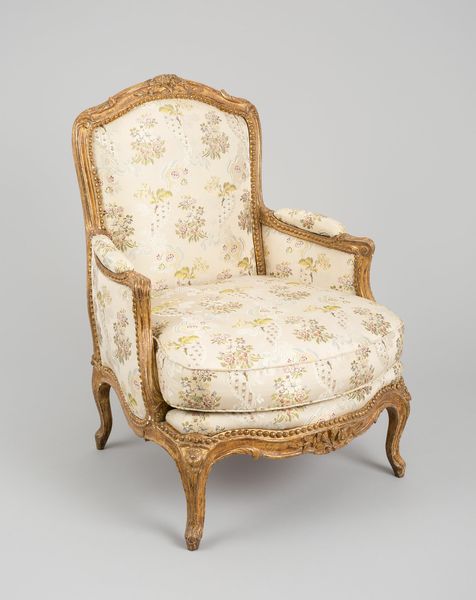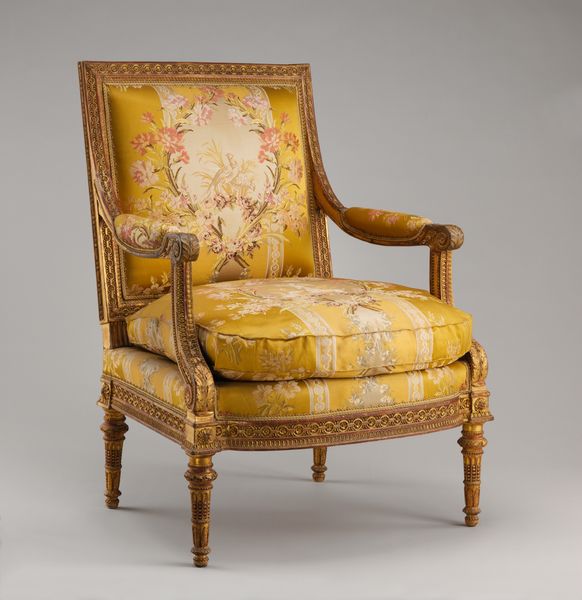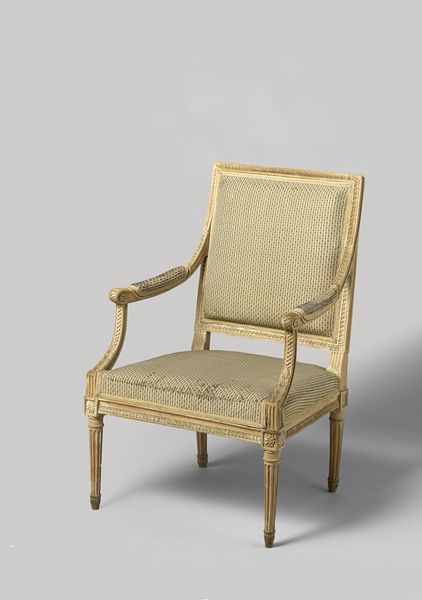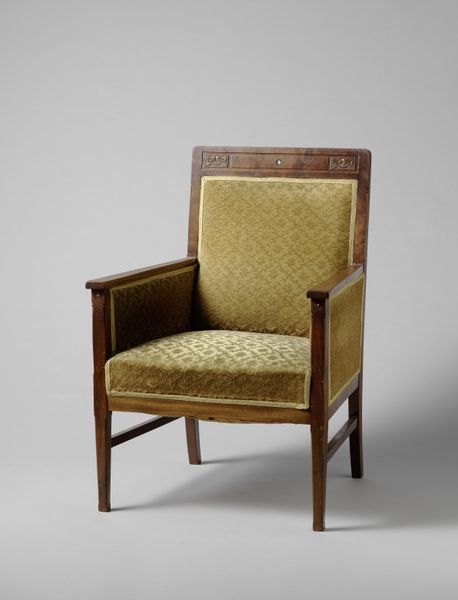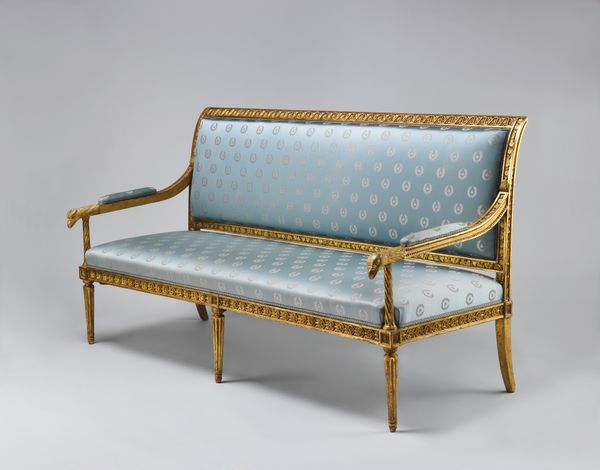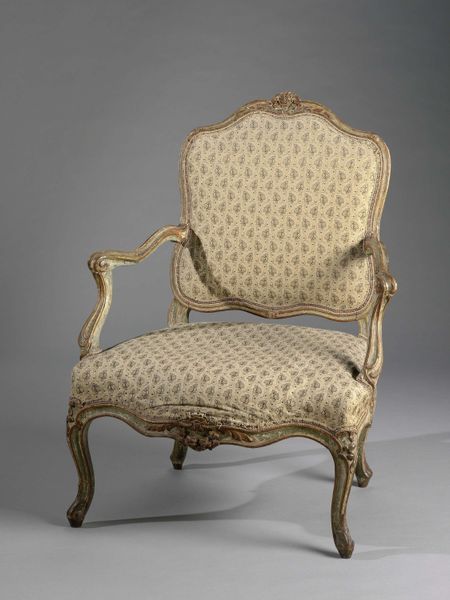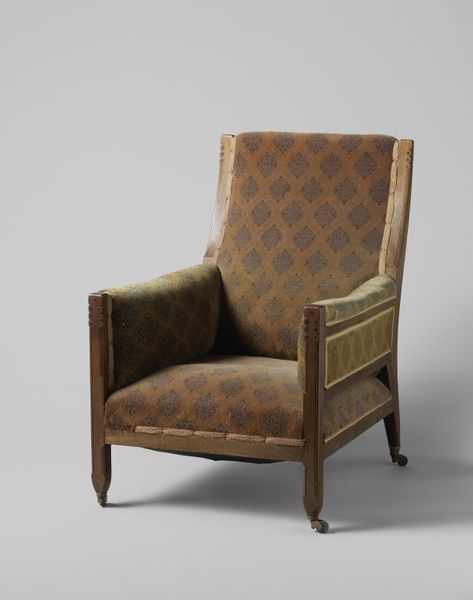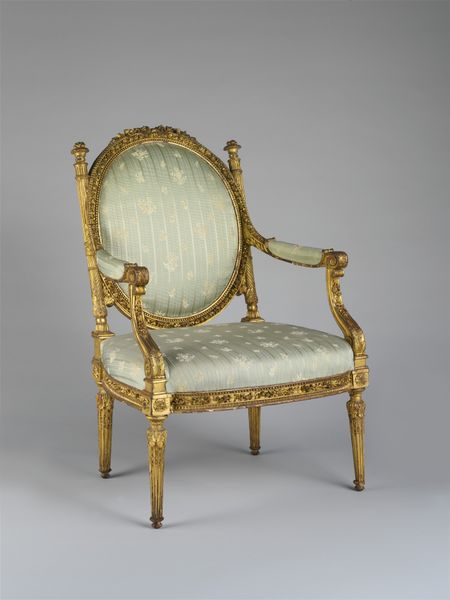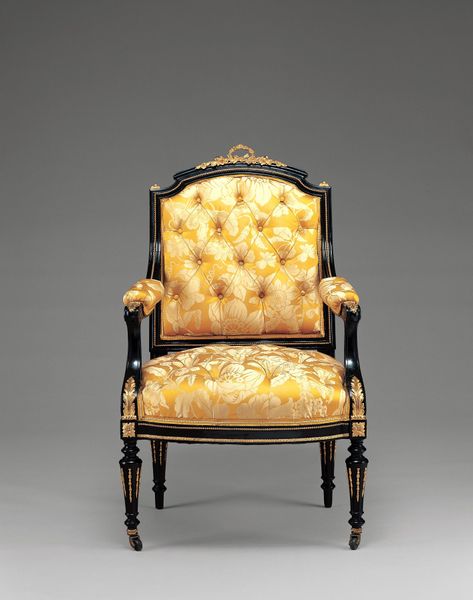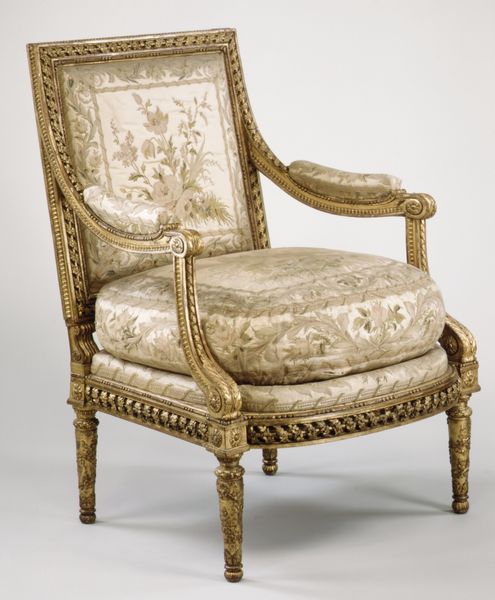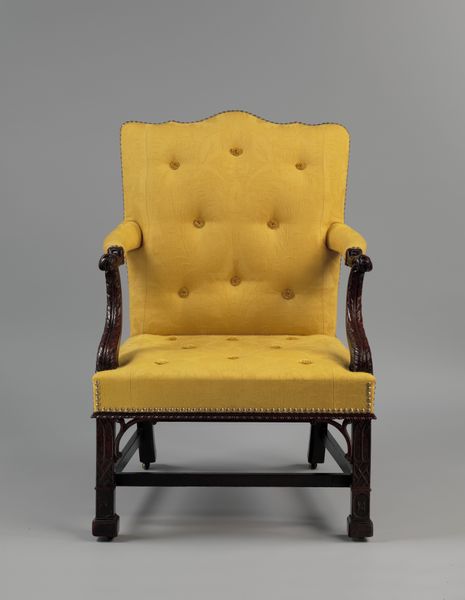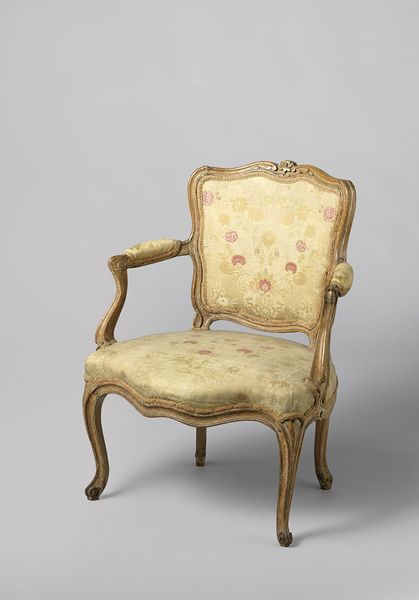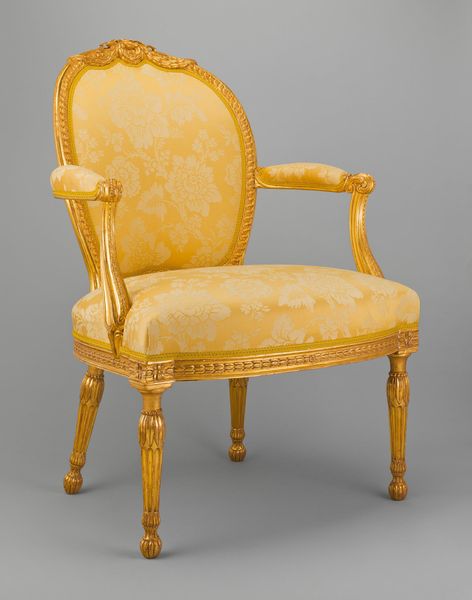
Dimensions: 92.7 × 59.1 × 65.7 cm (36 1/2 × 23 1/4 × 25 7/8 in.)
Copyright: Public Domain
Curator: I am struck by the elegance and restraint in this armchair—the overall feeling of something almost impossibly refined. Editor: We are looking at an armchair, one of a pair created by Jean Avisse between 1780 and 1785. These pieces reside here at The Art Institute of Chicago. Made with carved wood and luxurious fabric, this furnishing speaks to the Rococo and decorative-art styles of its time. Curator: Avisse really knew how to make a statement, didn’t he? While understated in its pale colors, every element communicates status. The shape of the seat alone suggests relaxation and leisure—something to sink into. What does that remind you of, in its symbolic power? Editor: It's like a throne of domesticity. The floral pattern, though seemingly delicate, becomes a repeating motif of idealized nature tamed for comfort. The carving along the frame isn’t ostentatious, but meticulously details nature, reinforcing a sense of control over one's environment, maybe even over fate itself. Curator: Absolutely. It is not just a seat; it's a representation of societal hierarchy—of sitting in a position of comfort and influence. Consider its original setting: the chair, almost certainly commissioned for the elites of the day. Each element is a symbol in a language of wealth and taste, all very self-conscious in its appeal. Editor: And that appeal continues today. What I see is not just historical artifact, but also an object whose composition retains the potential to evoke calm. Its linear structure offers a clear, rational design in its basic form that then supports unrestrained fantasy in the upholstery. Curator: Indeed. Seeing it like this also brings forward our own associations of the chair—of a personal space for thought, refuge, and comfort in the larger cultural sense. Its continued relevance hinges on the associations with relaxation. Editor: To consider its form brings an appreciation for both the restraint and the artistry involved in achieving that particular sensation. The symmetry, color, the balance of carved details—it's a whole composition, like a sculptural gesture.
Comments
No comments
Be the first to comment and join the conversation on the ultimate creative platform.
